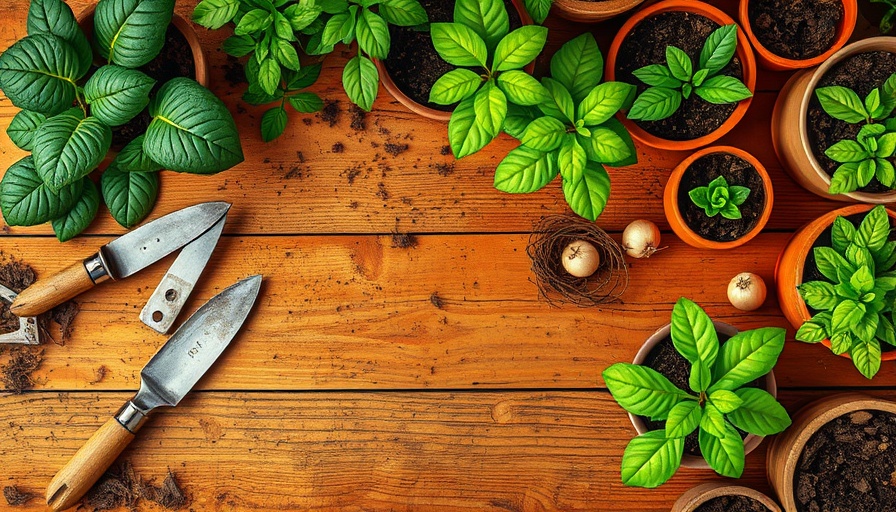
Explore the Best Allotment Books for Sustainable Gardening
Allotment gardening is enjoying a renaissance in the UK, with over 250,000 allotment holders now tending to their own pieces of land. With sustainability at its core, this growing trend is a delightful way to reconnect with nature while enjoying home-grown produce. For those rainy days when outdoor gardening isn’t an option, curling up with a good allotment book can spark creativity and planning for the next growing season. Here, we dive into top selections that not only guide you through practical gardening techniques but also inspire a lasting relationship with the land.
Why Books Matter in Sustainable Gardening
The right book can be an invaluable resource for eco-conscious homeowners and homesteaders. In a world overflowing with information, thoughtfully curated allotment books can cut through the noise. They offer practical insights tailored to the unique challenges of UK gardening, promoting sustainable practices that align with a lower-impact lifestyle.
Allotment Book Recommendations
Below, we've compiled a list of three essential allotment books that aim to guide you in environmentally friendly ways while nurturing your gardening enthusiasm:
Homegrown Revolution by James Wong
This standout book encourages a shift in perspective on what we cultivate. Wong pushes gardeners to explore beyond traditional crops such as potatoes and carrots. He introduces readers to exotic edible plants that can thrive in the UK, like daylilies and sea buckthorn, turning your allotment into a vibrant space filled with diverse produce. With practical planting guides, readers can embrace a “living larder” philosophy that enhances biodiversity.
No-Dig Gardening by Charles Dowding
For those looking to grow their gardens organically while reducing work, Dowding’s no-dig gardening method is transformative. By focusing on soil health and minimizing disturbance, Dowding advocates for layered composting, allowing nature to foster growth. His techniques not only maintain soil quality but lessen weeding efforts, a crucial aspect for time-strapped gardeners.
The Vegetable Grower’s Handbook by Huw Richards
Richards’ book is perfect for beginners and seasoned allotment holders alike, offering concise, step-by-step tips to maximize yield. His practical approach to vegetable gardening aligns perfectly with eco-friendly practices. Readers can learn how to grow a variety of vegetables while being mindful of time, effort, and resources used, effectively embodying the principles of sustainable living.
Actionable Insights and Techniques
In addition to honing your gardening skills through these books, consider implementing eco-friendly practices on your allotment. Here are some actionable insights:
Crop Rotation: Rotating crops are vital for preventing soil depletion. Each type of vegetable has different nutrient needs, thus changing crops annually can rejuvenate the soil.
Composting: Making your own compost from kitchen scraps and garden waste not only enriches your soil but minimizes household waste.
Use of Native Plants: Incorporating native species attracts local wildlife, enhancing the ecological balance in your garden.
Future Trends in Allotment Gardening
The trend towards sustainability in allotment gardening is expected to grow. Embracing techniques that promote environmental health—from water conservation to organic pest control—will lead to a thriving community of gardeners dedicated to their local ecosystem. This movement aligns with broader environmental goals, paving the way for future generations to enjoy the fruits (and vegetables) of their labor in a sustainable manner.
Community and Social Connection
Allotment gardening is not just about individual success; it's about fostering community. Whether exchanging surplus harvest or sharing gardening advice with neighbors, these interactions create a supportive network. Online communities, too, have emerged, providing resources, inspiration, and a platform for gardeners to share their journeys.
By diving into these essential books and adopting the suggested practices, you can transform your allotment into a sustainable paradise, all while enjoying the deep satisfaction that comes from homegrown food.
If you’re ready to dig deeper into sustainable living practices and need a community to cheer you on, consider connecting with local gardening groups or online forums. Everyone will certainly appreciate the fresh ideas and shared experiences!
 Add Row
Add Row  Add
Add 




Write A Comment